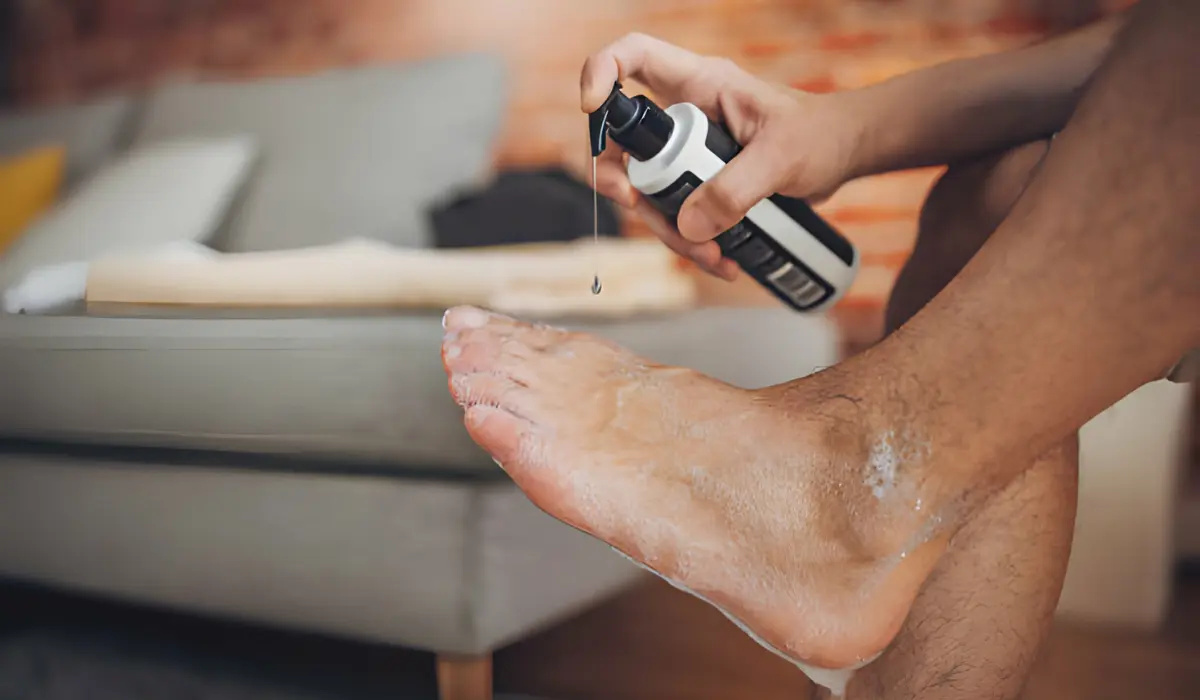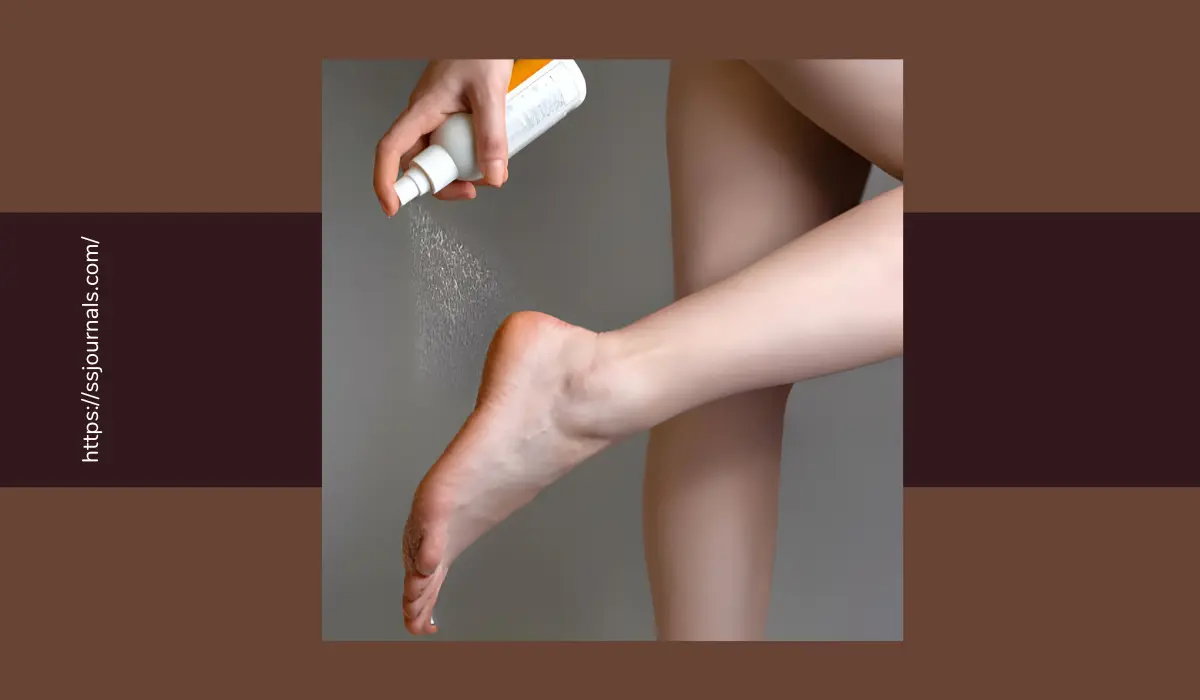Fungal infections like athlete’s foot can cause irritation, scaling, cracking, redness, and itching on the feet. Using an over-the-counter antifungal foot spray containing ingredients like miconazole nitrate can help treat these uncomfortable symptoms.
Antifungal foot sprays work by killing the fungi that cause infections on the feet. Fungi thrive in warm, moist environments like the inside of shoes. Using an antifungal spray helps create an environment on the feet that makes it harder for the fungi to survive.
This article will cover how to properly use an antifungal foot spray to treat fungal infections on the feet. It will also discuss the uses of these sprays, how long treatment takes, and potential side effects to be aware of when using antifungal foot spray. Learning the correct usage and being informed on what to expect can help ensure safe and effective treatment of foot fungus infections.
What is Antifungal foot spray?

If you suspect you have a fungal foot infection like an athlete’s foot, or toe nail fungus using an over-the-counter antifungal spray can help clear up the infection. These sprays contain active ingredients like miconazole nitrate or tolnaftate which are antifungal medications.
Some common brand names of antifungal foot sprays include Tinactin, Lotrimin AF, and Lamisil. These sprays work to kill off excess fungus growing on the feet resulting in infections.
How to use Antifungal Spray?
When using an antifungal foot spray there are some key steps to follow:
Clean the feet
Before applying the antifungal spray, wash and dry feet thoroughly, especially between the toes where fungi can hide. Removing dirt, bacteria, and dead skin cells helps the spray work better.
Apply to affected areas
Spray the antifungal medication directly onto impacted areas like in between the toes, the bottoms of feet, along the edges of feet, or nail beds if toenails are infected. Follow the instructions on the amount to apply. Applying too much won’t improve effectiveness.
Let dry
It’s important to let sprayed areas fully dry before putting socks and shoes back on. The antifungal medicine adheres best to dry skin and works more effectively this way. Putting socks on too soon can rub off medicine.
Use daily
Most antifungal sprays containing miconazole nitrate or tolnaftate require twice-a-day usage. Consistently using for full treatment duration is key for treating fungal foot infections. Stopping too soon can allow the remaining fungi to start growing again.
Continue use after symptoms resolve
You’ll need to continue applications for about a week after visible symptoms disappear to make sure the infection is fully cleared. Not doing so often leads to repeat infections. Consult spray packaging for specific guidelines.
Along with properly applying the antifungal spray, make sure to keep your feet clean and dry. Change socks regularly, wear breathable shoes, and dust your feet with antifungal or antibacterial foot powder to prevent the recurrence of fungal infections.
Uses of Antifungal Foot Sprays
Antifungal foot sprays containing miconazole nitrate or tolnaftate can treat a variety of fungal infections affecting the feet, including:
Athlete’s foot (tinea pedis)
Fungal infection between the toes or bottom/sides of feet causes scaling, cracking, redness, and itching. Sprays help clear inflammation and kill fungi on the skin.
Toenail fungus (onychomycosis)
Onychomycosis fungal infection makes toenails thickened, discolored, and crumbly. Spraying underneath the tip of the nail delivers antifungal medicine to the infection site on the nail bed.
Foot ringworm (tinea pedis)
Contagious fungal infection creates red, circular rash-like lesions on the top or bottom of the foot. Antifungal spray helps resolve rash by targeting causative fungi.
Hand fungus
If you also have a fungal infection on your hands, spraying antifungal foot medicine onto affected hand areas can also help treat the fungal hand infection simultaneously.
These over-the-counter antifungal sprays are not intended to treat bacterial or viral foot fungus infections like plantar warts, cellulitis, or herpetic lesions.
Expected Treatment Duration
It usually takes 2-4 weeks of diligent applications twice daily to fully resolve a case of fungal athlete’s foot or fungal toenails when using antifungal spray. Improvements should become noticeable after consistent use for 7-10 days.
However, every infection case can respond differently based on factors like:
- Severity of infection
- Type of fungi causing infection
- Person’s immune health
Moderate infections will be resolved with 4-6 weeks of spray treatment. But, more extensive fungal infections may take up to 3 months to get resolved.
Side Effects
Antifungal foot sprays containing miconazole nitrate or tolnaftate are typically well tolerated when used according to package directions. However, possible side effects can include:
Skin irritation
Redness, burning, stinging, or itching may occur after application. It usually resolves after a few days of continued use.
Allergic reaction
Ingredients can rarely trigger rash, swelling, or anaphylaxis. Discontinue use if allergic symptoms appear and seek emergency care for serious reactions.
Nail discoloration
Spraying under the tip of toenails can lead to yellowish discoloration as the infection clears. This is harmless and grows out as nails thrive.
Using too much spray or not letting the spray dry increases the chances of side effects. Seek medical treatment if side effects develop or don’t resolve within several days of stopping the spray.
Final Note
You can get a fungal infection simply from walking in public areas barefoot or not properly drying between toes and feet after bathing or exercise. Fortunately, one can prevent this by regularly applying an over-the-counter antifungal foot spray. The ingredients like miconazole nitrate included in the antifungal food sprays can prevent one from contracting any fungal infections.
So, does using an antifungal foot spray seem like a good solution for treating your foot fungus symptoms? Speak with your podiatrist or dermatologist to confirm the diagnosis and get personalized direction on application guidelines. Get to know what treatment duration makes sense for your case based on factors like infection severity. They can also advise on any potential medication interactions or health precautions to take into account.
With their oversight along with correctly following package use guidelines, over-the-counter antifungal foot sprays can be powerful tools in defeating frustrating fungal foot infections for good.

